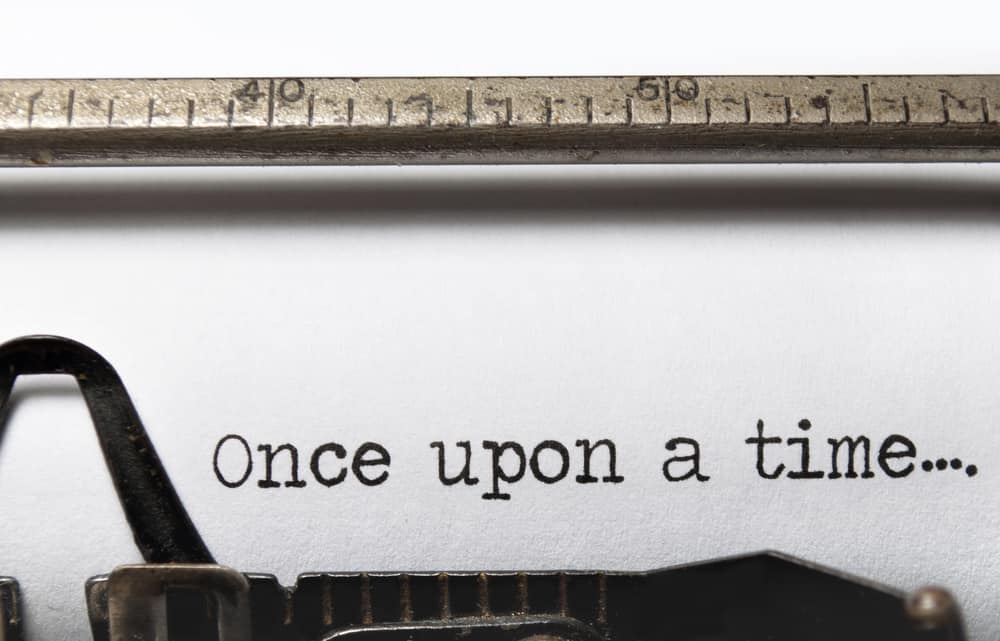Storytelling is as old as humanity itself. The history of writing goes from telling fairy tales around a campfire to sharing experiences on social media. Stories have always drawn people in. And for good reason! Stories connect people and transport them into an entirely different world. This can be a place of action and reaction, of twists and turns, or of conflict and resolution.
But crafting a good story isn’t easy. It requires planning, creativity, good writing, and rigorous editing. This post will cover 7 tips for crafting the perfect story. These include how to create an engaging plot, establish believable dialogue, and build suspense.

How to create an engaging plot
The first step to writing a good story is creating an interesting plot. A plot is the sequence of events that make up your story. It’s what happens to your characters in everyday life and how they react to these events.
To create a plot, one of the simplest and most effective methods is the three-act structure. Screenwriters popularized this method, but it can apply to any type of story.
The three-act structure looks like this:
Act I: Setup
This is where you introduce your characters and establish the world they live in. You also need to set up the conflict that will drive the story forward.
Act II: Complication
The plot thickens in Act II as the conflict takes its toll on your characters. Things go wrong for them here. They must overcome obstacles in their path.
Act III: Everything comes to a head
You push the characters to their limits, and they must resolve the conflict. Everything that has been building up leads to one last moment.
After you’ve planned out your plot using the three-act structure, it’s time to fill in the details. To do this, you need to establish a believable dialogue. You can build suspense through foreshadowing and create scenes that will keep readers engaged.
Establishing a conflict or goal when writing a story
Every story needs conflict. There is no reason for your characters to take action without it. The conflict should be something that your character wants or needs to achieve. It can be external, like defeating a villain, or internal, like overcoming a personal flaw.
Once you’ve established the conflict, you need to give your characters a goal. This is what they’re striving for throughout the story. By the end of the story, the goal should be specific and realistic.
Create an interesting setting
The setting is just as important as the characters in your story! A well-developed setting creates a sense of place and atmosphere, immersing readers in the world of your story.
When developing a setting, it’s important to consider both the physical location and the time. This will give you a foundation to work from when creating your scenes.
You should also think about how your character interacts with their environment. How does the setting affect them? Are they comfortable or out of place?

Character development and its importance
Your story will be more memorable if readers connect with your characters. So, create believable characters that readers can relate to!
One way to make your character feel real is by giving them flaws and making them imperfect. By adding weaknesses or struggles, you make them more human and easier for readers to connect with.
It’s also important to give your character a backstory. What experiences have shaped them into the person they are today? Why do they act how they do? Answering these questions will help to make your character feel three-dimensional.

Plotting your story
Now that you’ve established the conflict and goal, as well as created believable characters, it’s time to plot out your story.
One of the best ways to do this is by using a plot outline. This is a writing system used to plan out each scene in the story. It helps to ensure that your plot is cohesive and that each scene moves the story forward.
A plot outline can be simple or complex. Some writers jot down a few key points for each scene, others write out a more detailed summary.
Once you have your outline, you can start writing your first draft. This is where the actual work begins, but also where you can see your story come to life. Trust your instincts and go with the flow. You can always edit and revise later.
A well-developed character is essential to any story. The reader should identify with the characters and understand their motivations. A character must transform over the course of the story, as their actions and decisions reveal different sides of them.
This change in behavior or attitude makes a character interesting! By exploring how the character changes throughout the narrative, you can craft the perfect story. It’s important that these changes are believable and make sense within the plot.
Building tension and suspense in your story
Better writers know that building tension and suspense in a story is a vital part of crafting a gripping tale. You can create intense moments of tension by escalating the stakes for your protagonist, such as making their goal more important or adding obstacles to their path. Readers are eager to find out what will happen next and this will keep them on edge.
You can also use plot twists to keep readers engaged and guessing, even after they’ve seen it coming. This way, you can create scenes that are unpredictable, which add an element of mystery and intrigue to your story.
Another tactic is to use symbolism, imagery, and metaphors. This creates an emotional connection with the reader. By using these literary devices in your writing, you can evoke powerful emotions and make your story more memorable.
Finally, you can use pacing to build tension and anticipation in the story arc. When crafting a climax, build excitement before delivering the final blow. You can immerse readers in the climax and make it memorable this way.
Using foreshadowing and red herrings
Foreshadowing is a powerful tool for creating tension and suspense in a story. It lets you know what is coming without giving away too much.
Red herrings are another useful technique that can mislead readers and throw them off the scent of the true plot. By creating doubt, ambiguity, or confusion in your story, you can keep your readers engaged and guessing until the end.

How to craft believable dialogue in your writing
Use conversational language from a particular region or culture to create realistic dialogue. Carefully consider word choice. Some words carry different meanings in different contexts.
This may be useful to help you flesh out the characters’ personalities and motivations.
Researching the characters and their backgrounds
It’s important to understand the motivations, emotions, and personality traits of your characters to write interesting dialogue. This means writing natural and realistic dialogue that fits the character’s personality and tone.
Balancing natural conversation with exposition
When writing dialogue, make sure it flows naturally and sounds realistic. You can accomplish this by creating characters who have distinctive speech patterns, personalities, and relationships. Using these characteristics in dialogue can help make the story more vivid for readers. For example, a character with a stammer might have difficulty forming coherent sentences.
It is also important to use elements of everyday conversation in your dialogue, such as humor and sarcasm. Such elements can help make the dialogue feel more genuine.
Editing dialogue for clarity and impact
As a writer, one of the most important skills you can possess is editing skills. Dialogue must be clear and engaging, but it should also be believable. It must convey the emotion of the scene without being expositional. To achieve this, use how people talk in real life as a model for your dialogue. Avoid long speeches that don’t sound natural and use contractions to make dialogue more realistic.
When writing dialogue, it’s essential to read it aloud to ensure it sounds natural and flows well. Editing skills are crucial for ensuring that your story flows seamlessly and has the right amount of dialogue and action.
Using description to enhance your storytelling
In crafting a story, it helps to use creative techniques to capture the reader’s attention. Descriptive writing can help readers become immersed in the story.
Use sensory language when writing about characters, settings, and other elements of a story. Readers will feel the same emotions as the characters do. It can also help them develop empathy for a character.
Expanding upon the five senses can also be beneficial for creative writing. By using words that refer to sounds, smells, touch, sight, and taste, readers will be able to fully immerse themselves in the story. Using these words creatively can also create vivid imagery, which helps readers grasp the story better.

Settings and characters
Describing settings and characters in a story is an important part of crafting an engaging narrative. Vivid descriptions paint a picture for your readers to help them visualize the scenes, characters, and events of your story. Creating detailed descriptions of your character’s personalities and their relationships with each other can help the reader understand their motivation and develop a connection with them.
Sensory details such as sounds, smells, and textures can help draw the reader into the story more fully. Be selective with words when describing settings and characters in a story. Only choose those that will convey the right tone and emotions. By describing settings and characters, you can help your readers fully engage with your narrative.
Avoid clichés and overused phrases
Using clichés and other overused phrases can lead to a dull narrative. Instead, use language that is personalized and unique to your story! Vary vocabulary and sentence structures to create original content. This will help capture the attention of your readers and make your story memorable.
By using analogies and metaphors to express your thoughts in a more interesting and creative way, you can further engage with your readers. This will help you craft an interesting narrative that stands out from the crowd.

Editing and revising your writing for a finished product
Editing and revising are two distinct steps in the writing process. Editing means going over a draft to make sure it’s of high quality and consistency. This includes identifying and fixing grammar and spelling errors.
Revising involves changing the content, structure, and organization of a story. This step ensures that a finished product is coherent and accurate.
In order to create an interesting piece of writing, it is important to minimize the word count while still providing a thorough and well-written piece.
Check the structure and flow of the narrative
When crafting a story, it’s important that the narrative has a sound structure and flow. Redundant information or plot holes in a story can detract from the overall impact of the narrative.
Check for any such inconsistencies in the plot or characters and make sure that the story progresses logically.
Make sure all elements of the narrative are consistent. It’s important to check for consistency in style, tone, and voice throughout the story.
For example, make sure your characters stay consistent. This can be challenging when portraying complex characters with multiple traits and personalities. But it’s essential to create a believable narrative.
Be attentive to details such as setting and mood to maintain a cohesive narrative. By adding these elements to your story, you can create an interesting piece of fiction that draws the reader in from beginning to end.
Polish grammar and punctuation
To ensure that your writing is error-free and grammatically correct, use a spelling and grammar checker to go over every paragraph in your story.
Expand your vocabulary. Take the time to choose the best words for your writing. This does not mean using long or difficult words!
Read your work out loud to help identify errors in grammar and spelling. It takes time and effort to produce high-quality writing. But with patience and dedication, you can achieve a finished product that is polished and professional.
Have someone else read it for a fresh perspective
Writing a book is a challenging and time-consuming process. However, it is important to get feedback from experienced writers and authors. This will help you improve your writing skills and tone. You can also engage in writing communities to get feedback from other writers.
If you focus on crafting an interesting story and creating memorable characters, your writing will hold its own. Use the tips mentioned above to create a plot that’s engaging and unique and develop dynamic characters readers will love.
Remember to create a setting that is believable to establish the tone of your story. Adding tension and suspense can help keep readers hooked, too. For writing dialogue, aim for natural-sounding conversations that are clear.
You can also use description in your writing to help craft gripping narratives with vivid imagery. Hope you found these tips helpful!

